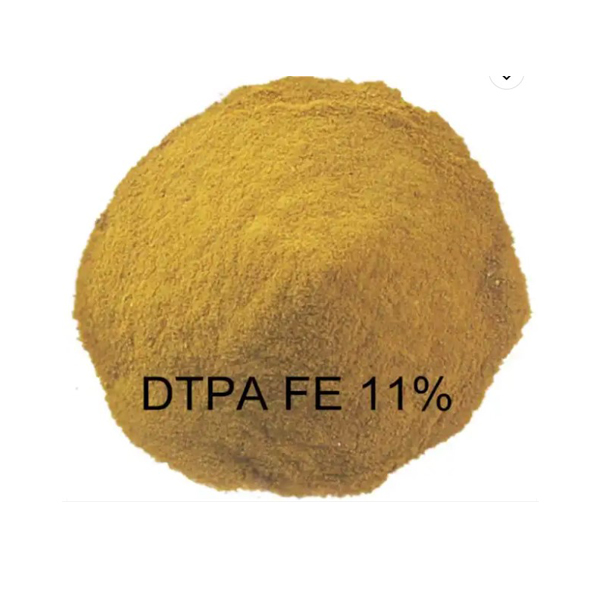
News
Nov . 18, 2024 00:53 Back to list
oem edta chelating agent
Understanding OEM EDTA Chelating Agents Properties, Applications, and Benefits
EDTA (Ethylenediaminetetraacetic acid) is a chelating agent that has become increasingly important in various industrial and environmental applications. This versatile compound is particularly vital in contexts where metal ion removal and stabilization are necessary. The growing emphasis on efficiency and sustainability in industries has led to a rise in the use of OEM (Original Equipment Manufacturer) EDTA chelating agents, particularly in manufacturing processes that require robust and reliable solutions.
What is a Chelating Agent?
A chelating agent is a chemical compound that can bind to metal ions and form stable, soluble complexes. This property allows chelating agents to sequester metal ions, preventing them from participating in undesired reactions. EDTA is one of the most widely used chelating agents due to its strong affinity for divalent and trivalent metal ions such as calcium, magnesium, lead, and iron.
Properties of EDTA
EDTA has several noteworthy properties that contribute to its widespread use
1. Chemical Structure The chemical formula of EDTA is C10H16N2O8, and it contains four carboxylic acid groups and two amine groups. This unique structure allows it to effectively bind multiple metal ions.
2. Solubility EDTA is highly soluble in water, making it an ideal candidate for various aqueous applications, ranging from cleaning solutions to agriculture.
3. Stability The complexes formed between EDTA and metal ions are typically very stable, which is essential in situations where long-lasting metal ion sequestration is necessary.
4. pH Sensitivity The effectiveness of EDTA is influenced by the pH of the solution. It works optimally in neutral to slightly alkaline conditions.
Applications of OEM EDTA Chelating Agents
The industrial applications of OEM EDTA chelating agents are vast and diverse. Some key sectors include
1. Agriculture In fertilizers, EDTA is used to enhance the availability of micronutrients to plants, facilitating nutrient uptake and improving crop yields. This is particularly important in soils that are deficient in essential trace elements.
oem edta chelating agent

2. Industrial Cleaning EDTA is utilized in cleaning products to prevent mineral deposits and scaling. Its ability to bind hardness ions makes it a valuable ingredient in detergents and soaps.
3. Water Treatment In water treatment facilities, EDTA is employed to remove heavy metals from wastewater, facilitating safe disposal. This application is crucial in protecting aquatic ecosystems and ensuring compliance with environmental regulations.
4. Food and Beverage EDTA is used as a preservative in some food products to inhibit metal-catalyzed oxidation, thereby extending shelf life and maintaining quality.
5. Pharmaceuticals In medical applications, EDTA is used in chelation therapy to treat heavy metal poisoning. It helps in detoxifying the body by binding excess metals, which can then be excreted.
Benefits of Using OEM EDTA Chelating Agents
The use of OEM EDTA chelating agents brings several advantages
- Enhanced Product Performance Adding EDTA to formulations can significantly improve their effectiveness, whether in fertilizers, detergents, or other applications.
- Cost-efficient The stability and effectiveness of EDTA allow for lower dosage requirements compared to other alternatives, resulting in cost savings.
- Environmental Protection By enabling the safe removal and stabilization of heavy metals, EDTA plays a critical role in mitigating environmental pollution.
- Versatility The broad range of applications demonstrates EDTA's adaptability, making it a preferred choice in countless industries.
Conclusion
OEM EDTA chelating agents represent a crucial component in modern industrial practices. Their ability to bind and stabilize metal ions not only enhances product performance but also supports environmental sustainability initiatives. As industries continue to seek solutions that reconcile efficiency with ecological responsibility, the importance of EDTA and its applications is likely to grow even further. Understanding its properties, applications, and benefits can help stakeholders leverage this powerful tool to address the challenges of contemporary manufacturing and environmental management.
-
Polyaspartic Acid Salts in Agricultural Fertilizers: A Sustainable Solution
NewsJul.21,2025
-
OEM Chelating Agent Preservative Supplier & Manufacturer High-Quality Customized Solutions
NewsJul.08,2025
-
OEM Potassium Chelating Agent Manufacturer - Custom Potassium Oxalate & Citrate Solutions
NewsJul.08,2025
-
OEM Pentasodium DTPA Chelating Agent Supplier & Manufacturer High Purity & Cost-Effective Solutions
NewsJul.08,2025
-
High-Efficiency Chelated Trace Elements Fertilizer Bulk Supplier & Manufacturer Quotes
NewsJul.07,2025
-
High Quality K Formation for a Chelating Agent – Reliable Manufacturer & Supplier
NewsJul.07,2025
